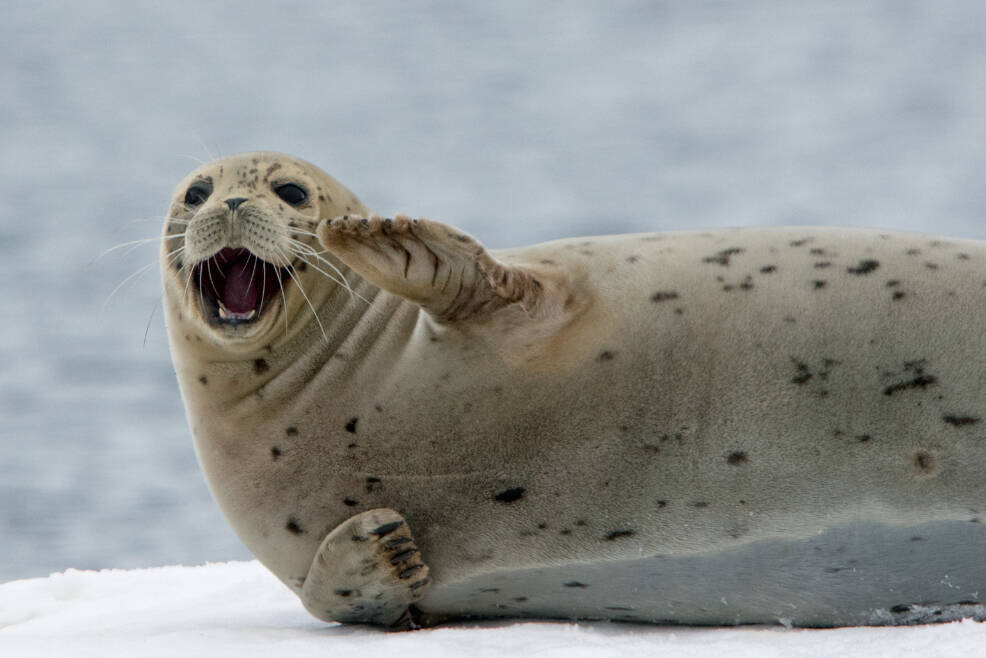Touch is a mechanical sense, detecting physical stimuli such as pressure, texture, stretch, vibrations and flow. Touch receptors come in a variety of forms — special cells, often housed in bumps or pits, or triggered by special hairs or feathers.
Human animals have touch receptors all over our bodies, but these receptors are especially concentrated in our hands, with which we continually experience and manipulate our immediate surroundings. Other animals often have touch receptors concentrated in particular parts of the body too, related (of course) to how those parts are used.
The emerald jewel wasp, native to Asia and Africa, has a long stinger that not only injects venom into its prey but also serves as an ovipositor for laying eggs. This parasitic wasp stings its cockroach prey in the body to slow it down, then stings it in the head to render it incapable of walking, and then lays its eggs near the zombie-victim’s legs; the larvae feed on the helpless victim. At the tip of that multi-purpose weapon are touch-receptors that register the feel of cockroach brain; if that brain is experimentally removed by researchers, the wasp can’t feel the texture of the brain and just keeps feeling around in vain. (Without that step of feeling and stinging the brain, the wasp presumably can’t proceed to oviposition.)
Fishes (and some amphibians) have lateral lines containing sensitive structures allowing the fish to ‘read’ water currents. As a fish swims, it displaces water that flows back along the body. The lateral line is a row of pits containing sensory cells that detect pressure and distortions of that flow, created by an obstacle or an approaching predator. The lateral line also allows schooling fish keep track of each other and to coordinate their movements.
We see shorebirds foraging out on the intertidal zone, poking their bills into the sand and mud. The tips of their stiff little bills are loaded with touch receptors that can sense the movement of water around pebbles, sand grains, and little clams or worms. As the birds probe down into the sediments, their bills set up tiny currents of water that flow around objects that distort the currents—distortions that can be detected by the bill-tip sensors. (Then the bird has to discriminate pebbles from food…)
Mice and rats (and opossums) sweep the spaces ahead of themselves with long, mobile whiskers, each whisker registering contacts in a different part of the brain, so the critter can form a sort of map of what’s in front of it. But cats and dogs don’t whisk their mobile whiskers back and forth like that (Why?).
Harbor seals have a face full of whiskers, which the seals use to follow hydrodynamic wakes left by prey fish; even a blind seal can track a fish this way, discriminating victims by size and shape and direction of movement. And here is the fascinating part of this story: As a seal swims, its whiskers create their own little turbulences, which might get in the way of detecting wakes produced by prey. But it turns out that seal whiskers have a special shape: they are elliptical (not round) in cross-section and variable in thickness and that somehow reduces the whisker’s own turbulence, allowing better reception of prey wakes. These modified whiskers are not found in walruses and seals that are bottom-feeders nor in sea lions that are reported to rely chiefly on vision for hunting.
Crocodiles and alligators have little pressure-sensitive bumps along the edges of their jaws. These predators often lurk quietly in the water, with the snout at the water’s surface. Those bumps can detect surface vibrations created when an animal falls or walks into the water (and can even note the disturbance made by a drop of water falling onto the surface). Then the predator responds quickly!
The sensitive bumps may be used in other ways too, such as registering water-surface disturbances made when males emit their deep bellows in mating season.
As a bird flies, tiny specialized feathers (called filoplumes) with sensors at their bases monitor the positions of adjacent bigger feathers. This lets the bird make the small adjustments of its wings that are needed to fly efficiently as conditions change. Similarly, the membranous wings of bats bear lots of touch-sensitive hairs that sense airflow, allowing bats to make quick adjustments of their flight path around obstacles.
Lots of arthropods have tiny, astonishingly sensitive hairs on their legs or elsewhere. In many cases, those hairs are tuned to particular frequencies of vibrations in the air. So a spider may detect extremely small pressure waves of a tiny insect flying close by, and pounce on it. And prey may detect an approaching predator: a cricket can detect the air waves of a spider moving in, unless that spider is moving extremely slowly and not setting up air waves. These hairs are more sensitive than any visual receptors can be; in fact, the energy needed to trigger these hairs is said to be almost as small as that of heat-activated, jiggling molecules.
Of course, this is just a sample of the marvellous array of ways that animals use touch-sensitiveness.
• Mary F. Willson is a retired professor of ecology. “On the Trails” appears every Wednesday in the Juneau Empire.

